Pasta Lovers Take Note: Life Exists Beyond The Noodle
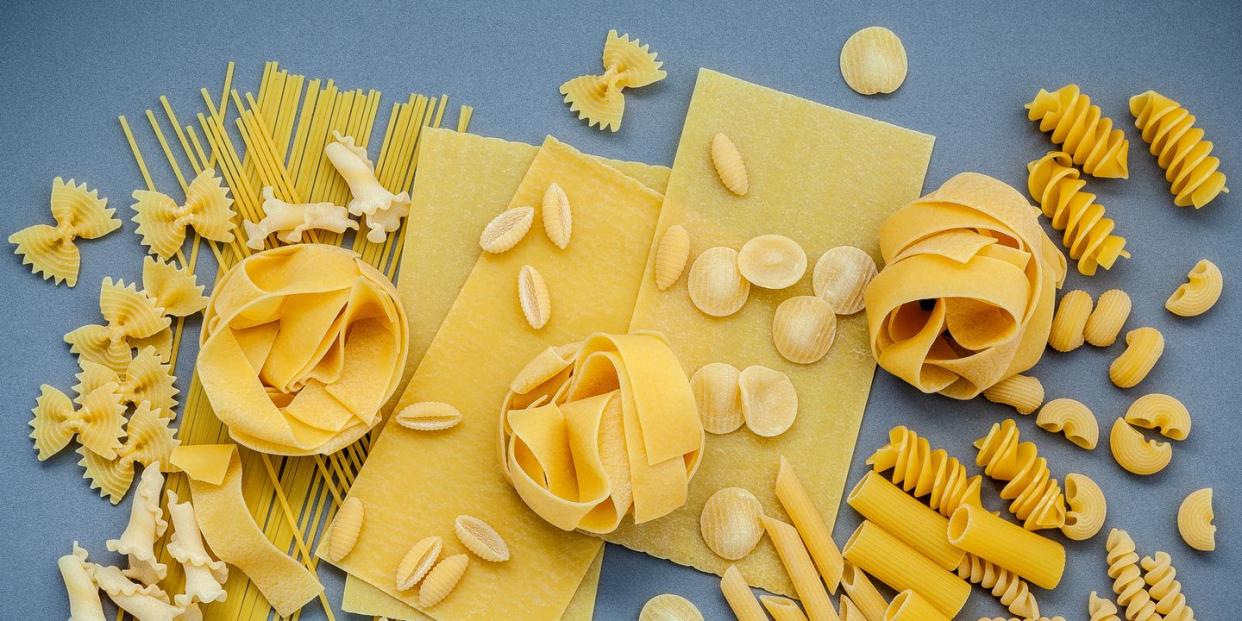
I’m sure you’ve noticed that we’re celebrating Pasta Week here at Delish. From the classic Cacio e Pepe to a hearty Tuscan Butter Gnocchi bake to delightful Rainbow Spaghetti, we’ve got all your durum wheat noodle bases covered. We are ALL about the pasta right now, but I’m here to play the devil’s advocate today, and I’m going to ask a question that’s been plaguing me lately: How about...not pasta?
Frankly, I love pasta but all of my local stores’ pasta aisles have been cleared in recent weeks by enthusiastic pasta lovers and eaters and I simply don’t have any boxes on hand to satisfy my noodle cravings. Which got me thinking, how can I eat pasta dishes without pasta? Truth is, after a bit of thinking, there are many unsung heroes in the carbohydrate realm that deserve a little more of the spotlight right now.
Potatoes
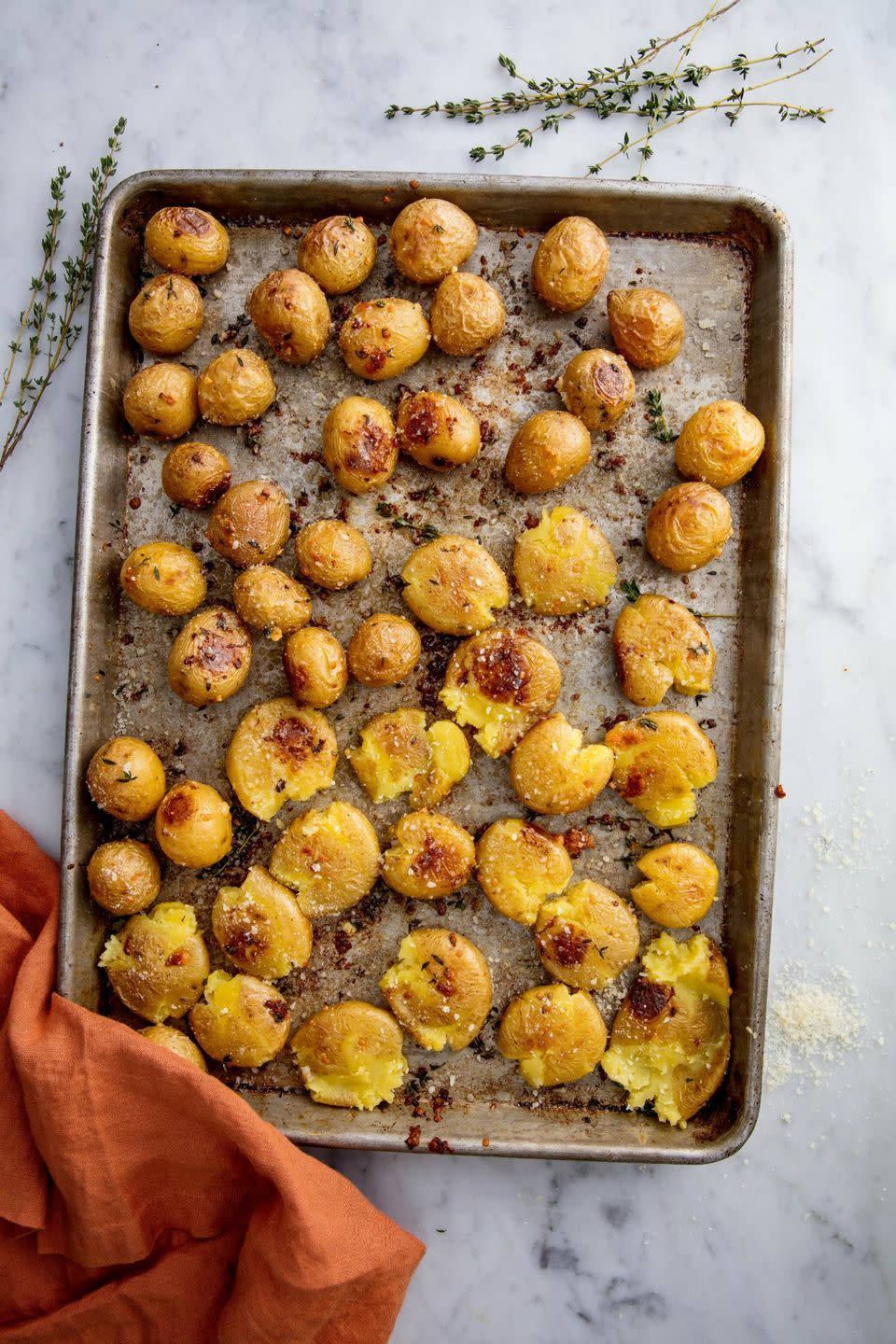
Growing up in a Chinese household, my mom used to slice russet potatoes up into thin, julienned sticks and stir fry them in oil with very simple spices, an egg, and bell pepper. I basically grew up eating potato noodles and never realized it until now. It’s no wonder this is the first ingredient that popped into my head as a spaghetti replacement.
This starchy tuber is the perfect candidate to fill in for pasta in creamy, cheesy recipes. Yearning for some cacio e pepe but have no pasta on hand? Make these deliciously golden garlic smashed potatoes, save some of that starchy potato cooking water for the cheese sauce, and continue with the pasta recipe for the ultimate cacio e pepe variation. The craggy edges capture even more of that delicious Parmesan sauce than normal pasta would, so really, this substitution might just surpass the original.
A quick nutrition check: one large russet potato can contain up to seven grams of protein and a third of the daily recommended intake of dietary fiber (when eaten with the skin). It also contains a handful of vitamins and minerals that pasta doesn’t have: almost half of the daily recommended intake of both potassium and vitamin B6, 120% of recommended vitamin C intake, along with iron and magnesium in lesser amounts.
A truly overlooked produce staple, we give thanks to the humble potato.
Sweet Potatoes
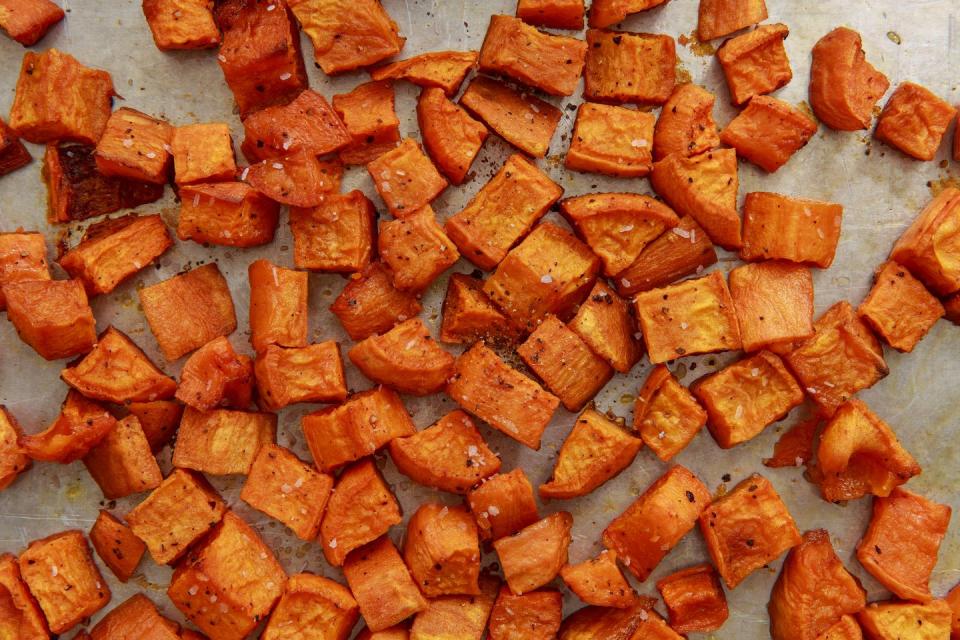
It goes without saying that this sweeter cousin of the white-fleshed potato is beloved during the holidays, making its appearance in classic candied yams and sweet potato pies on dinner tables across the country. But what if I told you that sweet potato works equally well in savory applications? What if I told you that it can be the perfect substitute for pasta? Its sweetness will dance in the more acidic red sauces and will work amazingly well in recipes like classic spaghetti and meatballs and sloppy joe mac and cheese.
Because they can be pretty moisture-laden, I highly recommend roasting them simply before using them in pasta recipes to maintain their structure. Bonus feature: roasting will also add a subtle layer of caramelized flavor to your dish.
A quick nutrition check: one large sweet potato contains up to four grams of protein and a quarter of the daily recommended intake of dietary fiber (when eaten with the skin). It surpasses the potato when it comes to variety of minerals and vitamins: a whopping 770% of recommended vitamin A intake, 65% of vitamin C, 30% of vitamin B, 50% of manganese, along with lesser amounts of potassium, copper, magnesium, iron, calcium, and more!
Despite its name, the sweet potato is truly destined for savory greatness: if you’re a fan of layered noodles, this sweet potato lasagna is a must-try—no roasting beforehand required.
Eggs
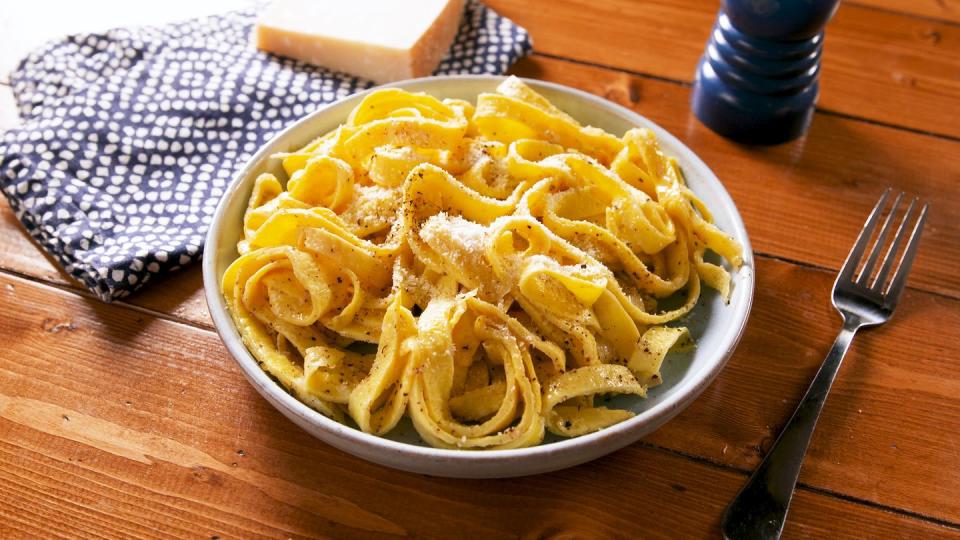
Yes, I’m serious. Eggs are one of the most perfect ingredients in existence and they can become noodles, and yep, we’ve already done it. This option is especially perfect for those who are on a low-carb or keto diet. A solid source of protein (seven grams in a single egg!) with a fatty yolk that contains a whole host of vitamins and minerals, eggs are unbeatable in both taste and nutrition. Once you make your egg noodles, you can pair them with any pasta recipe your heart desires: red tomato sauce, white cream sauce, or even in a cold Italian sub pasta salad.
You can also make a classic omelette and add in whatever ingredients you want in it—or on top of it. My favorite thing to pour on top of a silky smooth omelette is a briny, garlicky puttanesca sauce. And on my laziest days? I crack open a jar of marinara, pour a small pool of it on my plate, top it with two sunnyside-up eggs, and call it lunch. There’s no shame in my egg game.
Rice
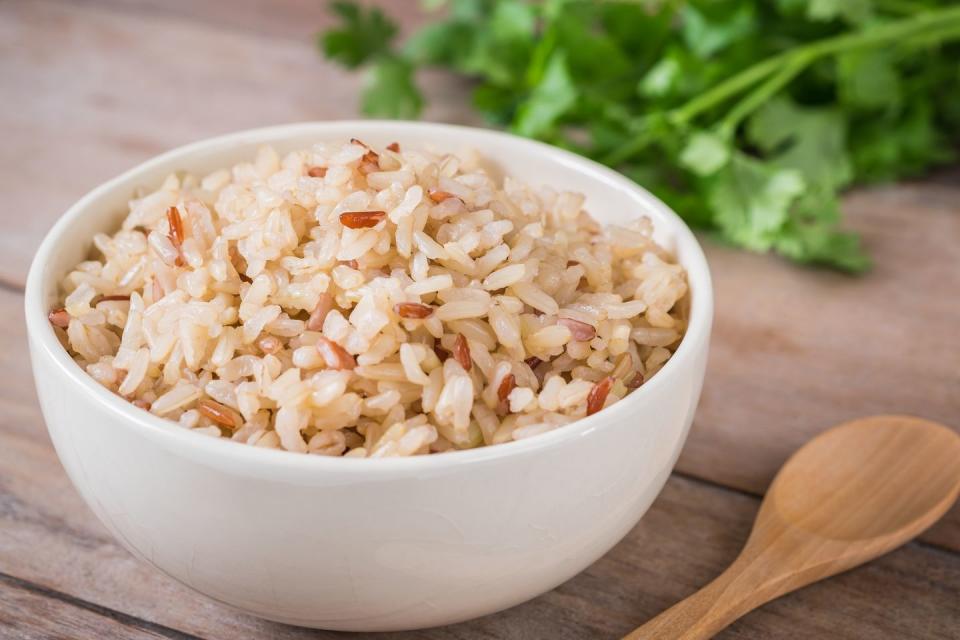
An obvious choice as a pasta substitute, rice is the other pantry staple carb that we love to have on hand. It’s excellent as the main player in its own recipe repertoire: chicken fried rice, beans and rice, sweet rice pudding. There are many varieties of rice available, from the long-grained basmati to medium-grained Arborio to short-grained sushi rice, with differing levels of starch (sweetness), fat (nuttiness), and nutritional content.
Generally speaking, brown rice is considered to be the more healthful option because it’s less processed and contains both the bran layer and cereal germ, two nutrient-rich components which are removed to produce white rice. Considered a whole grain, brown rice is higher in fiber and contains higher concentrations of vitamins and minerals. With its bran and fatty acids still intact, brown rice also offers a chewier texture and tends to be more earthy and nutty in taste than white rice.
When it comes to substituting rice for pasta, the possibilities are endless. Cheesy rice has always been a favorite of mine, so what better vehicle than a slow-cooker "mac" and cheese? Instead of using elbow pasta, sub in two cups of any white rice—rinse the rice until the water runs clear if you don’t want your mac to be too starchy, or, if you prefer a thicker, gummier mouthfeel, just rinse it once. (I always rinse everything at least once to remove any lingering debris.) Because rice is finer than elbow pasta and tends to stick to the bottom of the pot, I recommend stirring every 30 minutes to prevent the bottom layer from burning too much. But a little toasty, crunchy bottom is good—that’s often the best part!
More of a brown rice lover? Honestly, as long as you make a big batch of perfectly cooked brown rice, you can layer that in any pasta bake that calls for cooked noodles: buffalo baked ziti with a spicy cream sauce, garlicky shrimp alfredo bake, cheeseburger lasagna (yes, lasagna!)—just email me if you want more recommendations. Seriously, there are no rules here: play with it, experiment, find what you love to make and to eat, then keep making it and eating it!
Tofu
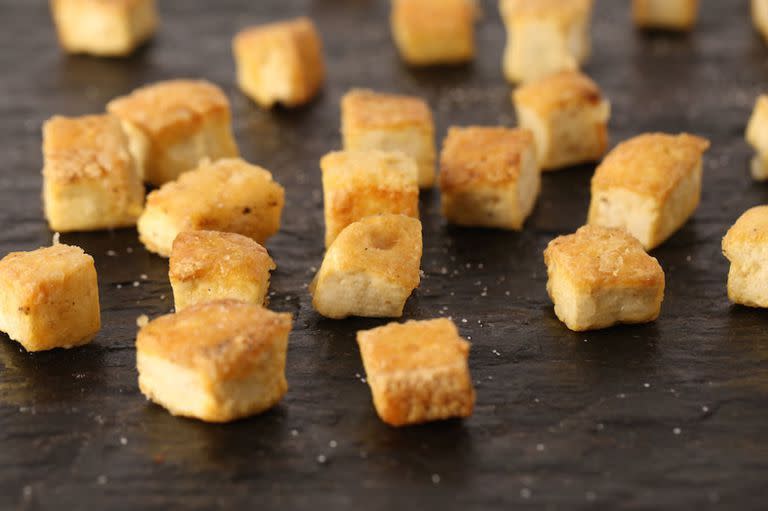
Controversial ingredient, I know—you either hate it or tolerate it, unless...you’ve had it cooked perfectly. Personally, I LOVE tofu. I love it silken, soft, medium, or firm; I love it in soups, deep fried, sautéed, or smoked and cured. When it comes to substituting tofu for pasta, go with the firm blocks then follow our technique for making the most deliciously crispy tofu of your life before putting it into your favorite recipes.
Because tofu is an ideal sponge for flavor, I recommend using it in heavily flavored dishes that can envelope each piece in spice and fat. My top candidates include this addictive rasta pasta, our classic macaroni salad, and a bright creamy pesto pasta.
A quick nutrition check: just one-half cup of tofu contains ten grams of protein, close to half of your daily recommended calcium intake, and a third of daily recommended iron intake. Perfect for a low-carb diet and also low in fat, tofu may be the ultimate underdog in this list, but it’s a winner in my heart.
Instant Ramen

This substitute needs no introduction. As far as nutritional value goes, this is the least healthful substitute on our list because of its flash-fried dehydration manufacturing process. But we all need our guilty pleasures and this is no exception: for a quick crunchy snack, I crush the entire package with my hands until bite-sized pieces form, sprinkle in half the spice packet, clamp the bag shut, and shake it wildly for ten seconds until each noodly crevice has trapped a bit of that addictive MSG magic.
We love this product so much, we have a gallery of instant ramen hacks. Ditch the spice packet and create your own flavors, starting with a five-ingredient Parmesan garlic ramen and working your way up to a full-on ginger beef stir-fry meal. If you’re short on ingredients, give this “Everything Is Optional” chicken noodle soup a swing and surprise yourself with your custom soup!
Zucchini (And Other Vegetables)
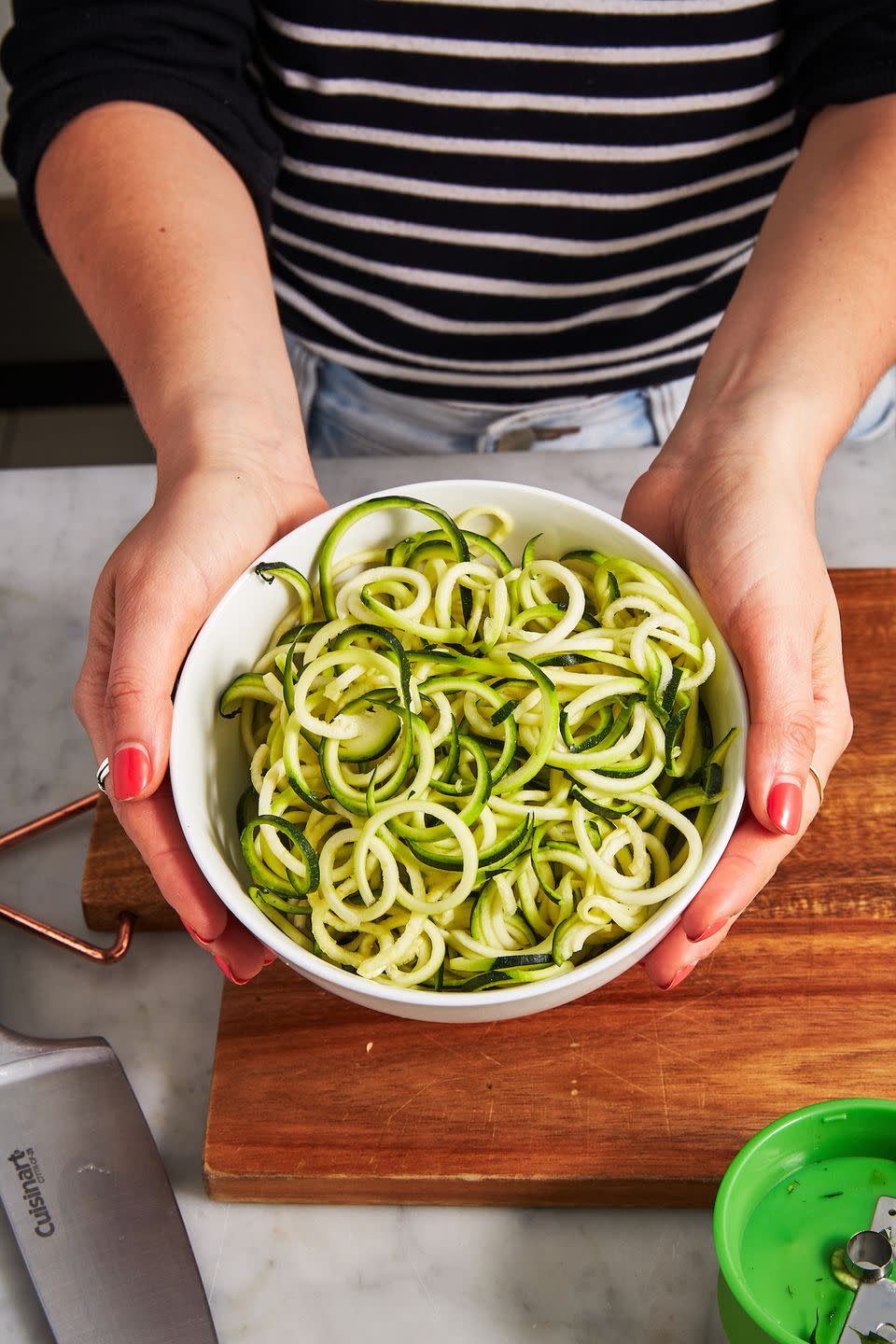
Our low-carb readers know and love this ingredient well. Due to its soft and tender yet pliable and sturdy nature, zucchini can be shaved or spiralized into noodles that do so well in soup, sauce, or stir fry. Our favorites include chicken zoodle alfredo, garlic butter meatball zoodles, and zucchini ravioli. And on that note—other hardier vegetables like carrots, parsnips, and beets will work in a very similar fashion when spiralized. Make your mom proud and eat your veggies today—because it’s good AND good for you.
You Might Also Like

